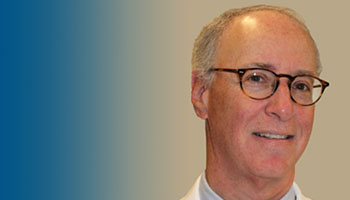HOW CAN WE HELP YOU? Call 1-800-TRY-CHOP
In This Section
ESPE Honors CHOP Endocrinologist for Scientific Excellence

Dr. Michael Levine was honored for his scientific contributions to pediatric endocrinology.
shafere1 [at] email.chop.edu (By Emily Shafer)
A career of outstanding scientific accomplishments in pediatric endocrinology earned Children’s Hospital of Philadelphia endocrinologist Michael Levine, MD, the 2020 International Award from the European Society for Paediatric Endocrinology (ESPE).
The honor recognizes a pediatric endocrinologist outside of Europe and the Mediterranean basin. Recipients are nominated by ESPE’s sister societies — in this case, the Pediatric Endocrine Society in the United States — for a lifetime of scientific excellence.
“It’s very gratifying to be recognized by one’s peers as having made a significant contribution to the field,” said Dr. Levine, who is medical director for the Center for Bone Health and the Lester Baker Endowed Chair in Pediatric Diabetes at CHOP. “The people who have received this award in past years are all extremely accomplished and well-known international endocrinologists. I’m really honored to be included among a group of past award recipients whose work I have long admired and whose contributions have been so important to our specialty.”
Dr. Levine, who is also Emeritus Professor of Pediatrics at the University of Pennsylvania Perelman School of Medicine, said support from CHOP and Penn leadership provides a unique scientific and academic environment where he can focus on his research on bone and mineral metabolism.
“Access to Core laboratories and an open and collaborative scientific community facilitate the development of new experimental paradigms and advance the ability to do research because they provide researchers with technological and intellectual resources that amplify opportunity,” Dr. Levine said.
He especially appreciates the freedom to pursue and conceptualize ideas, design an experimental approach, and execute the research, in collaboration with world-class scientists. His work has led to the identification and characterization of genetic mutations that cause a number of endocrine syndromes, such as pseudohypoparathyroidism, McCune Albright Syndrome, hypoparathyroidism, and several novel disorders of vitamin D metabolism.
Dr. Levine’s latest paper in the journal Endocrinology is a first step toward the development of parathyroid gland replacement therapy, as opposed to parathyroid hormone replacement therapy.
In endocrinology, therapy usually is based on replacing a missing hormone. For example, patients with hypothyroidism are given thyroid hormones, and patients with diabetes are given insulin. Patients with hypoparathyroidism can be treated today with parathyroid hormone. But in many cases, hormone replacement cannot replace functional parathyroid tissue, which can secrete parathyroid hormone dynamically to balance minute-to-minute changes in the serum concentration of calcium.
“There has been a lot of interest in the field of regenerative medicine to develop ways to use stem cell technology to replace missing pancreatic tissue in patients with diabetes, in whom tissue replacement provides better control than hormone replacement with insulin. We are applying this same approach to hypoparathyroidism,” Dr. Levine said.
Dr. Levine and his team developed a protocol that allows them to induce either embryonic or adult stem cells to acquire most of the characteristics of mature parathyroid cells. The next step in the process is development of an animal model to determine if the parathyroid cells created from the stem cells will work in vivo. Dr. Levine anticipates applying for a grant from the National Institutes of Health in the near future to move the research further.
“The goal is to be able to take stem cells from an individual with hypoparathyroidism and use our technology to turn those cells into parathyroid cells, and transplant them back into that individual,” Dr. Levine said. “Transplanting functional parathyroid tissue would overcome the need for daily medications to manage hypoparathyroidism, and using a patient’s own cells to achieve this would avoid the need for medications to prevent tissue rejection. This is the ‘holy grail’ of hypoparathyroidism.”